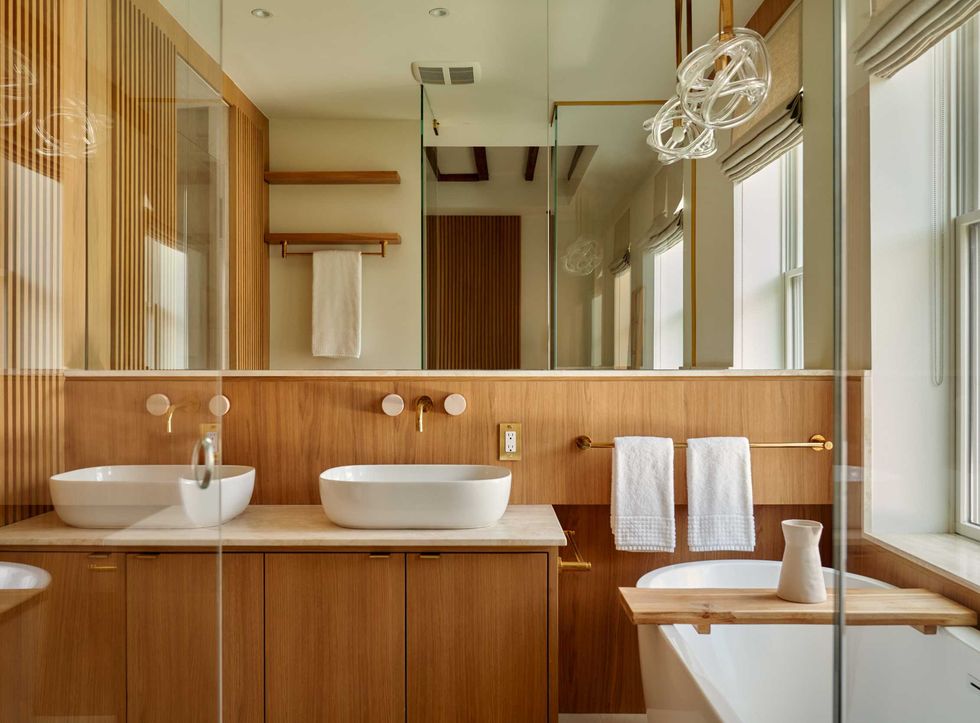Badass Working Women
Award-winning Dallas architects talk challenging convention and mommy guilt
If Lorena Toffer went with her first career path, she'd be a chemical engineer. If Ana Guerra had followed her childhood dreams, she'd be a dentist.
Instead, both women are award-winning architects.
Toffer and Guerra are each receiving AIA National Honor Awards. An associate at Corgan, Toffer is the recipient of this year's Young Architects Award. Guerra is a project manager at Jacobs-Global buildings, and she is being honored with AIA's Associates Award. They will be recognized for their achievements at Celebrate Architecture on March 6.
Toffer and Guerra recently sat down with CultureMap to discuss their path to architecture and the challenges that women face in the workplace.
CultureMap: Did you always know you wanted to be an architect?
Ana Guerra: No, I always wanted to be a dentist. I was in organic chemistry in college, building houses with my molecular model set and people were like, "I think you might be in the wrong major." So I went and explored it. My sister was an architect, so I resisted it, just because I didn’t want to be little sister who follows the big sister.
"After I got my first job, I realized that I was going to have to accept the fact that sometimes I would be the only girl in the room," Lorena Toffer says.
Lorena Toffer: When I graduated from high school, I was going to study chemical engineering, which is pretty ironic because I ended up marrying a chemical engineer. By chance, I happened to attend an architecture conference. That was the moment that everything changed, and I knew my path.
CM: Do you feel like more women are becoming architects now?
AG: In college, 50 percent of my classmates were women, but 50 percent of my profession is not. A lot of the women I went to architecture school with dropped out of the profession, and I think that’s a struggle as a female in any profession, to make those decisions. I don’t know if that’s unique to architecture. My older sister definitely has fewer female colleagues than I do.
LT: After I got my first job, I realized that I was going to have to accept the fact that sometimes I would be the only girl in the room. It is a little bit of an ongoing challenge. Our architecture firms and offices are a little bit more diverse, but that doesn’t always happen with our clients or our consultants.
CM: What was your first job in architecture?
AG: I was in grad school, and I worked for a residential architect who still had a guy who drew by hand. It was a little three-person firm, and it was a really beautiful experience but totally different than what I do today. Now I work in a firm of 50,000.
LT: My first job was mechanical engineering-related. It was in Mexico City, and it’s completely opposite of what I do today. At Corgan, I get to design and do the fun creative stuff, which I love.
CM: What’s something that surprised you about working in architecture compared to studying it?
"Finding that unique creative thought is sometimes harder for a younger architect than a generation that drew by hand," Ana Guerra says.
AG: Coming into the profession, I had to figure out how to be okay with being a girl because I had never thought of myself that way. AIA, our professional organization, had been so male-dominated for so long. It’s not that they weren’t welcoming of women, but I just looked around the room and realized I was the only one wearing heels. I think that was probably the biggest shock for me.
LT: When I was in school it was more competitive and less of a team environment. And that’s what I like about being an architect. I know I don’t have to do it all by myself.
CM: What was your reaction when you found out you'd won a National AIA award?
AG: I was slightly embarrassed.
CM: That's such a girl thing to say.
AG: Right? I’m not a prideful person at all. I never would have done it had AIA Dallas not asked me to. I’ve received so much from AIA already that an award is just the cherry on top. But it’s delightful.
LT: I was totally surprised. When they called me, I honestly didn’t believe it. They left a message, but they didn’t leave a name, so I thought it was someone making a joke.
CM: What are some of your favorite projects?
AG: I do a lot of school work, and my latest series of projects has been for the Department of Defense. It’s incredible what these families sacrifice. I worked on a school in Japan, which was just fascinating and beautiful, and then on top of that you are doing it for very deserving families.
CM: Did you actually travel to Japan?
AG: Yes, while I was pregnant. Three times. Morning sickness on planes is awesome. Other than that it was great. You learn a lot about yourself when you are pregnant in a different country.
You don’t see a lot of pregnant women in Japan. People were like, "What is she doing here?" One plane was so tiny that the people in front of me couldn’t recline their seats, and I couldn’t put my tray down. It was all sorts of interesting.
"You learn a lot about yourself when you are pregnant in a different country," Ana Guerra says.
LT: One of the projects I am most proud of was at the Sixth Floor Museum. It’s a boutique space, less than 1,000 square feet. We created a reading room so they could bring some of their collections up from the basement.
It’s been booked every day since it opened, and people are coming from all over the world.
CM: What challenges do you face as a female architect?
AG: Mommy guilt is very real, and my husband doesn’t struggle with those things. I know lots of lawyers who leave the profession because they have way more demands in their job. I think architecture is actually pretty forgiving in that nature because there are so many different things you can do within the profession.
LT: We do face a unique set of challenges within our profession. In some cases it’s a matter of being strong enough to be a role model and perhaps represent the first time our clients see a woman in this type of role. I have a project in East Texas, and I have to prove that I have the same amount of knowledge and the same amount of skill as any of my colleagues.
CM: What’s something that people might be surprised to learn about you?
AG: I wanted to be a professional baseball player until I was 8 years old. I didn’t know that I couldn’t be a professional baseball player because I wasn’t a boy. I didn’t understand that, and I was really pissed off the day I found that out. Who made that rule? I still think I’d really enjoy being a professional baseball player.
LT: As much as love architecture, I think I enjoy the outdoors more. I like just being in nature and roughing it for a couple of days.
CM: What advice do you have for budding architects?
AG: We can get so bogged down in technology, and we have a lot of tools that make us very fast and make us all the same. Finding that unique creative thought is sometimes harder for a younger generation than a generation that drew by hand and everybody’s drawings looked different. You’ll have more value if you embrace who you are and what makes you different.
LT: I see a lot of students who are pretty much under the assumption that the goal is to just to graduate and get a job. But if they could step back a little and really think about their goals and what they are truly passionate about, then they could see past just getting a position and really explore the options within architecture to find the right fit.





 Flat-panel cabinetry provides a seamless look that is also practical for being easy to clean.Photo by JM Real Estate Photography / Celaya | Soloway Interiors
Flat-panel cabinetry provides a seamless look that is also practical for being easy to clean.Photo by JM Real Estate Photography / Celaya | Soloway Interiors This built-in wall combines a bar with the fireplace, TV, decorative shelving, and closed storage spaces.Rendering courtesy of Houzz
This built-in wall combines a bar with the fireplace, TV, decorative shelving, and closed storage spaces.Rendering courtesy of Houzz






